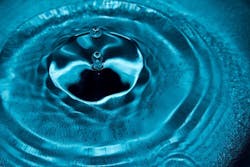Industry Associations Applaud Congressional Committees for Passage of Water Infrastructure Bills
The Senate Environment and Public Works (EPW) Committee unanimously passed the Drinking Water and Wastewater Infrastructure ACT (DWWIA) of 2021 Mar. 24, 2021.
The passage of this bill in the Senate EPW follows a hearing last week during which industry stakeholders shared the importance of reauthorizations of funding programs to the water and wastewater sectors.
The bill would reauthorize and significantly increase the amount of federal assistance made available to states and communities through the Drinking Water State Revolving Fund (DWSRF) and the Clean Water State Revolving Fund (CWSRF) programs.
According to the bill’s language, the DWSRF would start its reauthorization at $2.4 billion in 2022 and gradually increase annually to $3.25 billion for fiscal years 2025 and 2026. The CWSRF would follow the exact same reauthorization pattern for funding annually. Ultimately, this amounts to $14.7 billion for both programs.
Additionally, DWWIA also references the Water Infrastructure Finance and Innovation Act (WIFIA), and provides funding of $50 million annually through fiscal year 2026, and it would also resurrect the EPA Lead Reduction Grant program with $100 million annually through fiscal year 2026. The lead reduction program would be a welcome funding source for utilities seeking to comply with the Lead & Copper Rule Revision, which is expected to be effective at the end of 2021.
Industry associations including NACWA, WateReuse Association and WEF released statements of support for the passage of the bill.
According to WEF, additional reauthorizations and changes include:
- The Clean Water State Revolving Fund would get $14.65 billion over the next 5 years and allow a greater percentage of loans to be forgiven or other favorable loan terms
- The Water Infrastructure Finance and Innovation Act would require only one ratings agency opinion letter, instead of two
- The U.S. EPA Sewer Overflow & Stormwater Reuse Municipal Grant Program would get $1.4 billion over the next 5 years.
- The Alternative Source Water Pilot Program would receive $125 million over the next 5 years.
In a letter of support from the WEF Board of Trustees, including President Lynn Broaddus, the trustees congratulated “the Committee on putting forth a bill that will advance many of the water infrastructure funding and policy priorities our members have been advocating for over the years,” citing provisions of the bill including but not limited to: Sections 210, 204, 211, 217, 202.
NACWA also shared vocal support for the Senate EPW Committee passage of the bill.
“NACWA applauds the Senate EPW Committee for unanimously passing the Drinking Water and Wastewater Infrastructure ACT of 2021,” said Adam Krantz, chief executive officer of NACWA in the NACWA statement. “The Clean Water State Revolving Fund is an integral part of how municipal public water utilities pay for much-needed capital investments and we are grateful to the Senate Committee for the increase of $14.5 billion over five years.”
According to the WateReuse Association, the legislation contains a number of WateReuse Association policy priorities, including: reauthorization of the Alternative Water Source Grants Pilot Program and the creation of an Interagency Working Group on Water Reuse to create a more formal structure for engaging external stakeholders on matters related to water recycling.
“The WateReuse Association applauds EPW Chairman Carper, Ranking Member Capito, and members of the Committee for developing strong, bipartisan legislation to improve our nation’s water recycling infrastructure,” said Patricia Sinicropi, executive director of the WateReuse Association in the association’s press release. “The Drinking Water and Wastewater Infrastructure Act of 2021 provides tools and investments to help communities address complex and evolving challenges through the adoption of water reuse.”
According to WEF, the DWWIA bill is expected to be considered on the Senate floor in April.
Additionally, bipartisan legislation was introduced in the U.S. House of Representatives, which would authorize $50 billion in direct infrastructure investment over the next five years. This bill aims to address America’s crumbling wastewater infrastructure and local water quality challenges, according to The House Committee on Transportation and Infrastructure.
Some of the provisions included in that bill that are supported by NACWA include:
- Directing U.S. EPA to assess low-income water needs around the country and authorization of a pilot program to develop and implement programs to assist low-income households in maintaining access to affordable and reliable clean water services.
- Establishment of a new Clean Water Infrastructure Resiliency and Sustainability Program authorized at $225 million over five years.
- Authorization of a U.S. EPA study that examines the state of existing and potential future technologies – key components of the bipartisan Advanced Research Projects Agency – Water.
- Authorization of $5 million for U.S. EPA to complete an updated Clean Watersheds Needs Survey
- Authorization of a U.S. EPA pilot program to assist with 15 public clean water utility projects to create or improve waste-to-energy systems
Should both bills pass their respective chambers, the Senate and House will need to negotiate the goal of a final agreement. Once passed by Congress, the water infrastructure package will be eligible to be included in the expected major infrastructure package later on in 2021.
President Joe Biden is also expected to announce his multi-trillion dollar infrastructure package in the coming weeks. The total cost for this bill is estimated to range from $2 trillion to $4 trillion.
